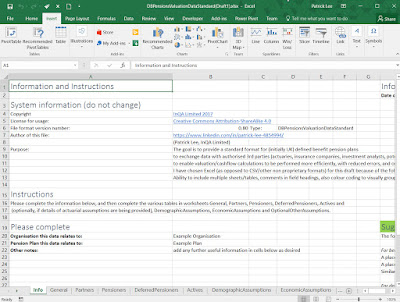A (UK) Pensions Data Format Standard - let's make it happen! (Part 2)

(This is a follow up to part 1 which you can see here . Posted by Patrick Lee on 15 August 2017). Proposed First Draft I've now completed a first draft of a proposed standard, as a Microsoft Excel file (118kB, so quite small). You can download it here . Comments/criticisms most welcome. Let's make this happen! Why Microsoft Excel? I've chosen to put it in an Excel file (as opposed to CSV or other non proprietary formats) for the moment because Excel offers the following advantages: we can put several different worksheets/tables in a single file field headings can have explanatory comments I've using colour coding to visually group similar fields. The goal The goal is to provide a standard format for (initially UK) defined benefit pension plans to exchange data with authorised 3rd parties (actuaries, insurance companies, investment analysts, potential purchasers etc) to enable valuation/cashflow calculations to be performed more efficiently, with r...


